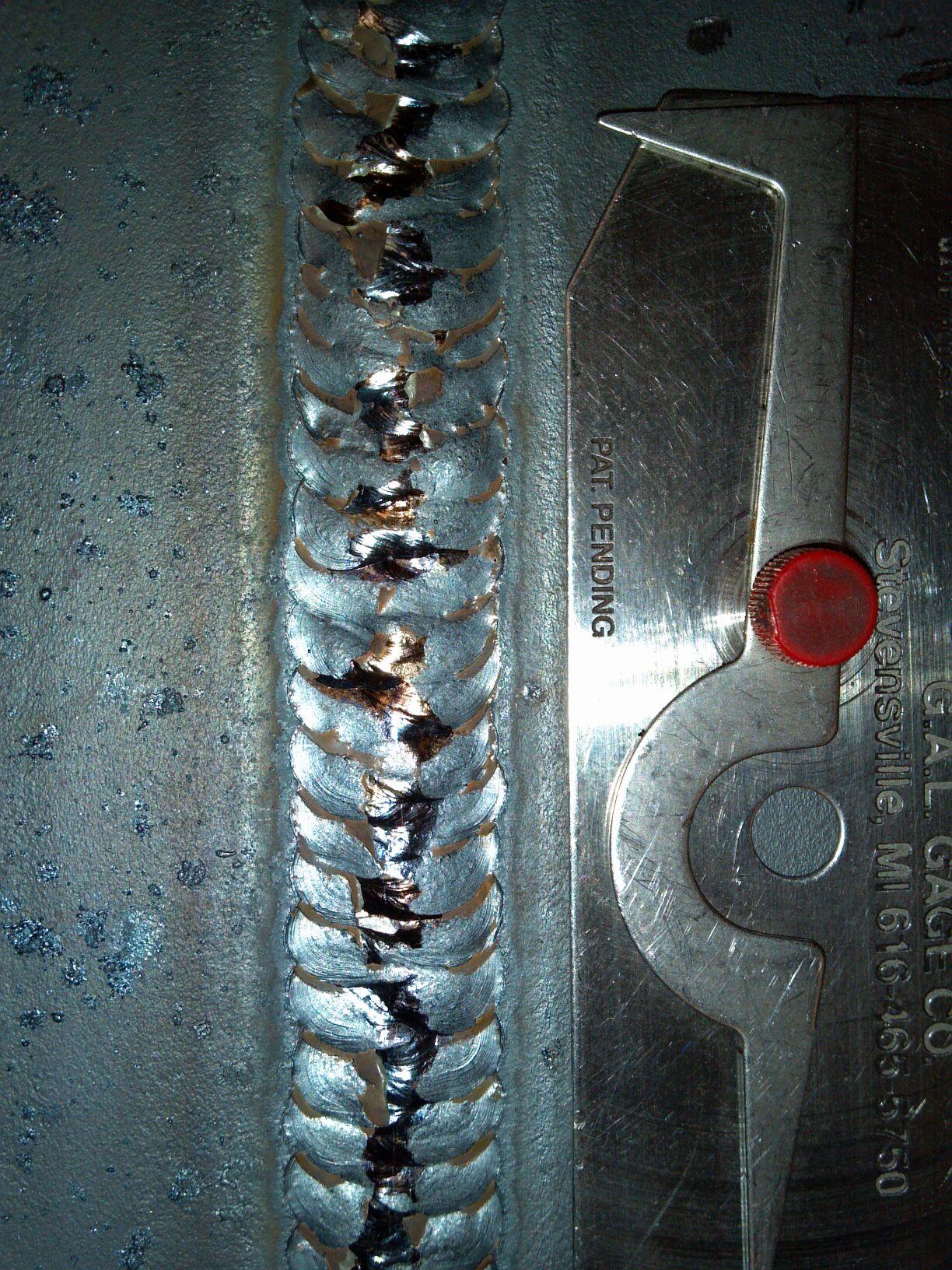Nice photograph. I'm not familiar with the nature of the marks seen on the weld bead surface.
Best regards - Al
Ive seen it on some SAW welds, typically a gas bubble trapped between the surface of the bead and the slag, doesnt necessarily mean a bad weld. might try less flux overburden if it is SAW

 By Lawrence
By Lawrence  Date
Date 12-06-2011 16:14
Edited 12-06-2011 18:20
I'm not a SAW expert by any stretch,, But I would like to ask a couple of questions.
Are the "Poak" marks your talking about the lighter colored circle indications?
If yes... When I look closely I can see the undisturbed ripples of the adjacent cover pass within the circle, which leads me to ask;
1. Is there any structural deformation within the circles?
1a. If yes, can the depression be measured
1a.1. If the depression is measurable, how deep? and how does it transition into the cover pass?
It almost appears to be some kind of oxide marking with no deformation...
Something similiar that is commonly seen would be when silicon islands on the surface of GMAW welds are removed after the weld has cooled... A little shiney spot is seen... This kind of indication would be negligable.
So if you can tell us a little more about those indications... Maybe the posters here can relate some responses that speak to the code inspection criteria.
Edit:
Here is an image of what I'm trying to describe.
This is not pock marks. Pock marks are an indentation resulting usually from a gas having difficulty in escaping, as Fred mentioned. Brush the weld.
If you look closely at the weld and a piece of the slag removed from a corresponding area, you will probably notice porosity/gas holes in the slag. This is what is leaving the marks in the above picture. There is no reason for rejecting the welds unless the porosity is in the weld metal AND exceeds the acceptance criteria for the weld. A thick slag/flux layer may be the cause or other parameters.
Just an opinion based upon observing machine SAW welds on spiral welded pipe while it was being made.
Gerald Austin
Iuka, MS
"Don't confuse my enthusiasm for skill or ability, Or vice versa!"
Very good photograph. What camera do you use? The weld metal has solidified perfectly. The ripples are not disturbed by the pock marks so I therefore conclude that there is no variation in the composition of the deposit, it solidified at the same temperature. This is hydrogen entrapped in the slag that is evolving as the slag cools. The shinny circles are from the hydrogen removing the oxygen from the metal's surface, just like a bright anneal in a hydrogen furnace. Not hydrogen embrittlement, I would not expect to see a hardness or microstructure variation. If the gas was nitrogen or CO/CO2 there would be discoloration on the metals surface.

